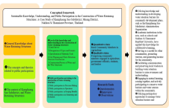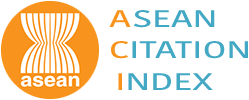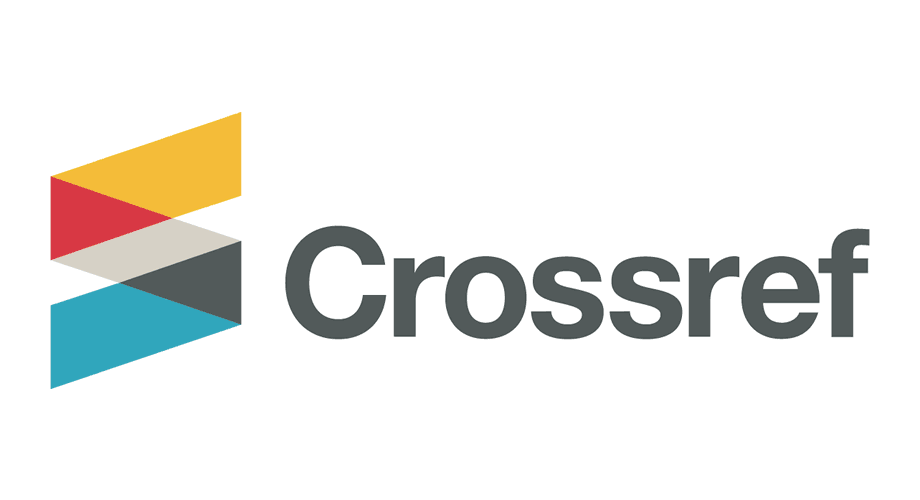Sustainable Knowledge, Understanding, and Public Participation in the Construction of Water-Retaining Structures: A Case Study of Kamphaeng Sao Subdistrict, Muang District, Nakhon Si Thammarat Province, Thailand
DOI:
https://doi.org/10.57260/csdj.2025.272327Keywords:
Public participation, Sustainability, Construction, Water-retaining structuresAbstract
This study investigates the realms of 1) Level of the knowledge and understanding in the construction of water-retaining structures, and 2) Public participation pertaining to the construction of water-retaining structures. Employing a mixed-method approach, it combines both quantitative and qualitative research techniques. For quantitative research, a questionnaire-based survey was conducted on 363 Rural Community Members in Agriculture, underwent scrutiny through measures such as frequencies, percentages, mean, and standard deviation. Concurrently, qualitative data emanated from interviews and observations conducted with 29 key informants, comprising community members engaged in agriculture, government officials, students, and leaders. The findings of the study were as follows: 1) Level of the knowledge and understanding in the construction of water-retaining structures, in all aspects was high spanning various facets of construction, including land surveys, design, materials, site planning, and the construction process itself. 2) Public participation: the participants exhibited a profound understanding of water-retaining structure erection, underlining the significance of public participation. Community-driven construction of water-retaining structures promotes decision-making, unity, and mutual benefits. Utilizing local resources, especially bamboo, aids environmental preservation. The adoption of bamboo weirs enhances cooperation, ensuring year-round water access and strengthening community bonds. Decentralized responsibilities foster collaboration, improving community relationships. These structures yield intellectual, economic, and social gains, benefiting agriculture and reducing drought risks. Ongoing evaluation and stakeholder collaboration ensure project success, enhancing community knowledge, understanding and sustainability. This collaborative culture encourages inclusivity and long-term stability, reducing external support dependency.
Downloads
References
Ajui, S., Kaewpaitoon, A., Kaewbutdee, P., & Dejjit, A. (2019). Strengthening Participatory Awareness and Behavior Change the Forest Resource Management of The Local Communities. Journal of Graduate Review Nakhon Sawan Buddhist College, 7(3), 93–112. Retrieved from https://so02.tci-thaijo.org/index.php/jgsnsbc-journal/article/view/
Andrew, C., & Stiefel, M. (1979). Inquiry into Participation-A Research Approach, Popular Participation Program. United Nations Research Institute for Social Development.
Balraj, N. A. (2017). Foundational Elements of Maslow’s Hierarchy of Needs and Jesus Christ’s Teachings of Human Need Management. Human Behavior, Development and Society, 15(1), 77–87. Retrieved from https://so01.tci-thaijo.org/index.php/hbds/article/view/180612
Bungmoom, T., & Zumitzavan, V. (2018). People Participation in Local Public AffairsA Case Study of Pung Tui Administration Organization, Nam Pong Distrtict, Khon Kaen Province. Governance Journal, 7(2), 356–375. Retrieved from https://so01.tci-thaijo.org/index.php/gjournal-ksu/article/view/163701
Bunmak, S. (2021). Research Methodology in Social Science. Songkhla: Faculty of Humanities and Social Sciences Thaksin University.
Buntao, Y., & Thaochalee, S. (2020). Sustainable Water Management of Ban Tha Dong, Village No. 13, Tha Sob Sao Sub-District, Mae Tha District, Lamphun Province. Journal of MCU Social Development, 5(3), 145–156. Retrieved from https://so06.tci-thaijo.org/index.php/JMSD/article/view/252380
Chasuwan, D., & Sanpugdi, V. (2019). The Integrated Water Management at the Local government Organization from Dam Construction of Khon Kaen Provincial Administrative Organization. Journal of Graduate MCU KhonKaen Campus, 6(3), 503–519. Retrieved from https://so02.tci-thaijo.org/index.php/jg-mcukk/article/view/215754
Chiamsathit, C., Janya, S., & Khumyos, P. (2020). Community Participation in the Solutions to Recurrent Flooding and Water Shortages of Banchan Village, Kalasin Province. Area Based Development Research Journal, 12(6), 416–431. Retrieved from https://so01.tci-thaijo.org/index.php/abcjournal/article/view/241998
Chunta, S. (2018). The Community Participation in Kham Watershed Management, Mae Chan District, Chiang Rai Province. Journal of Graduate Studies in Northern Rajabhat Universities, 8(15), 17–34. Retrieved from https://so02.tci-thaijo.org/index.php/JGNRU/article/view/136321
Cohen, J. M., & Uphoff, N. T. (1981). Rural Development Participation: Concept and Measure for Project Design, Implementation and Evaluation. New York: Cornell University Press.
Community Organizations Development Institute. (2016). Water check dams have life; their source is at the roots of trees. Retrieved from https://ref.codi.or.th/public-relations/news/14761–2016–04–18–03–19–44
Cronbach, L. J. (1990). Essentials of psychological testing. (5th ed.). Harper & Row.
Department of Health Service Support. (2023). Report on Kamphaeng Sao Sub-district. Retrieved from https://url.in.th/IlulL
Department of Nature Conservation and Land. (2023). Check dams are another natural conservation method. Retrieved from https://www.landfortomorrow.org/
Gunaratne, M. S., Firdaus, R. B. R., Sihivaitthasan, A. S., & Kamsi, N. S. (2023). The Importance of Multidimensional Vulnerability Analysis in Sustainable Development. Journal of Sustainability Science and Management, 18(9), 38–57. Retrieved from https://jssm.umt.edu.my/wp-content/uploads/sites/51/2023/09/JSSM-Volume-18-Number-9-Article-4-RESIZED.pdf DOI: https://doi.org/10.46754/jssm.2023.09.004
Hanghon, P., Dhammasaccakarn, W., & Choadchung, P. (2018). Community Management to Solve Headwaters Area of Songkhla Lake Basin. NIDA Development Journal, 58(2), 19-45. Retrieved from https://so04.tci-thaijo.org/index.php/NDJ/article/view/135540
Joomsoda, L., & Tirasuwanvasee, S. (2022). People’s Participation in Community Development: Ban Khon Khwang Community, Mueang District, Prachinburi Province, Thailand. Rajabhat Chiang Mai Research Journal, 23(3), 206–221. Retrieved from https://doi.org/10.57260/rcmrj.2022.260467 DOI: https://doi.org/10.57260/rcmrj.2022.260467
Khaenamkhaew, D., Onjun, P., Damrongwattana, J., & Prathum, B. (2023). The participation of community leaders for sustainable tourism development: A case study in Phipun District, Nakhon Si Thammarat Province, Thailand. Cogent Social Sciences, 9(1), 2229172. Retrieved from https://doi.org/10.1080/23311886.2023.2229172 DOI: https://doi.org/10.1080/23311886.2023.2229172
Khamphilaanont, T. (2007). Community Committee Participation in Local Development: The Case of Kukot Municipality, Pathum Thani Province. (Master’s thesis, Phranakhon Rajabhat University).
Khamsaen, T., Chamnanputthiporn, S., & Yotharak, D. (2018). The Policy for in Water Management with Weir Alive in Banjanpor, Dontako Sub-District, Thasala District, Nakhon Si Thammarat Province. Journal of Yanasangvorn Research Institute Mahamakut Buddhist University, 9(2), 37–46. Retrieved from https://so04.tci-thaijo.org/index.php/yri/article/view/173120
Konwong, S., Maidee, D., & Kaweewon, N. (2021). The Enhancement of Local Community’s Networks in Yom River Basin’s Management in Phrae Province. Journal of MCU Peace Studies, 9(2), 830–842. Retrieved from https://so03.tci-thaijo.org/index.php/journal-peace/article/view/246200
Krejcie, R. V., & Morgan, D. W. (1970). Determining sample size for research activities. Educational and Psychological Measurement, 30(3), 607–610. Retrieved from https://doi.org/10.1177/001316447003000 DOI: https://doi.org/10.1177/001316447003000308
Mahahing, S. & Thuraphun, K. (2022). Mixed Methodology Research. Journal of Roi Kaensarn Academi, 7(1), 559-576. Retrieved from https://so02.tci-thaijo.org/index.php/JRKSA/article/view/255392
Mangana, P., & Vetchapitak, S. (2020). The Building of Check Dam to Solve Shortage by Ban Nong Kong Nuea Community, Na Bo Kham Subdistricy, Mueang Districy, Kamphaeng Phet Province. Journal of MCU Social Development, 5(3), 133–144. Retrieved from https://so06.tci-thaijo.org/index.php/JMSD/article/view/252379
Maslow, A. H. (1943). A Theory of Human Motivation. Psychological review, 50(4), 370–396. Retrieved from https://doi.org/10.1037/h0054346 DOI: https://doi.org/10.1037/h0054346
Miller, E., & Buys, L. (2008). Does social capital predict happiness, health, and life satisfaction in an urban Australian community?. Kōtuitui: New Zealand Journal of Social Sciences Online, 3(1), 15–20. Retrieved from https://doi.org/10.1080/1177083X.2008.9522429 DOI: https://doi.org/10.1080/1177083X.2008.9522429
Muhammad-Ali, Y., Niyomyaht, S., Kalyanamitra, K., & Siripornvut, N. (2023). Effectiveness of Solid Waste Management according to 3R Principles. Journal of MCU Haripunchai Review, 7(1), 44–57. Retrieved from https://so04.tci-thaijo.org/index.php/JMHR/article/view/263161
Namburi, S. (2019). Participation Theory in Public Administration. The Journal of Research and Academics, 2(1), 183–197. Retrieved from https://so06.tci-thaijo.org/index.php/jra/article/view/179213
Nikornkul, P., Phrakhruvichotsikkhakij, P., & Phrakhruuthetthammasathit, P. (2018). Community Forest Reliance of Communities at Huai Kha Khaeng Wildlife Sanctuary. Journal for Social Sciences Research, 9(2), 104–116. Retrieved from https://so02.tci-thaijo.org/index.php/ssr/article/view/213570
Nikornkul, P., Phrakruwichotsikkhakit, P., & Phramahakriangsak-Indhapanno, P. (2020). Joint Buffer Zone Forest Management of the Community Area in Huai Kha Khaeng Wildlife Sanctuary. BU Academic Review, 19(1), 128–142. Retrieved from https://so01.tci-thaijo.org/index.php/buacademicreview/article/view/217221
Office of Conservation and Restoration of Water Sources. (2017). Upstream weir. Office of Conservation and Restoration of Water Sources, Department of Water Resource.
Office of the Kamphaeng Saen Subdistrict Administrative Organization. (2023). History. Retrieved from https://www.me-fi.com/tourismdb/Seniortourists-ust/subdistric_detail.php?subid=886
Office of The Public Sector Development Commission. (2021). Government Development Strategy (Year 2021–2022). Retrieved from https://dmsic.moph.go.th/editors/userfiles/files/2564_OPM1200_23.pdf
Ok Nation. (2015). Check dams are self-reliant, providing a sustainable way for communities to manage water resources. Retrieved from http://oknation.nationtv.tv/blog/a083/2015/11/22/entry-1.
Panyasean, S., Chobehuen, C., Nakatong, P., & Kawai, C. (2023). LearningResource Centerfor Haze and Forest Fire Management, Lampang Province. Journal of Scholar Community, 1(1), 83–95. Retrieved from https://so12.tci-thaijo.org/index.php/watmahasawat_jsc/article/view/147
Phongphook, S., & Bodeerut, C. (2021). Models of Sustainable Tourist Attraction Management by Community: Case Study at Ban Rakthai Nern Maprang District, Phitsanulok Province. Mahachulagajasara Journal, 12(2), 143–152. Retrieved from https://so06.tci-thaijo.org/index.php/gajasara/article/view/252651
Pilert, A., & Thanunrum, W. (2018). Efficiency-Increasing Water Resources Management for Sustainable Development with Participation of Ban Kaeng Community in Na Kae District, Nakhon Phanom Province. Journal of Community Development and Life Quality, 6(2), 453–474. Retrieved from https://so02.tci-thaijo.org/index.php/JCDLQ/article/view/130149
Pricklek, S., Chimhad, P., & Khaenamkhaew, D. (2022). The Participation in Community Development of The People in Nong Hong Sub - District Administrative Organization, Thung Song District, Nakhon Si Thammarat Province. Journal of MCU Nakhondhat, 9(4), 436–452. Retrieved from https://so03.tci-thaijo.org/index.php/JMND/article/view/260889
Puang-ngam, K. (2016). Local Governance in Thailand: Principles and New Dimensions for the Future. Winyuchon Publication House.
Rakchim, S. (2016). Water resources, living weirs. Aksorn Printing.
Royal Irrigation Department. (2016). Guidelines for Design, Construction, Repair, Maintenance, and Enhancement of Self-Sufficient Check Dams in accordance with the Royal Initiatives. Royal Irrigation Department, Ministry of Agriculture and Cooperatives, Office of the Royal Development Projects Board.
Sasadee, Y., Kaewchandee, A., Phujai, P., Tamnat, K., & Chulai, S. (2018). Designing and Developing Check Dams to Withstand Forest Water Flow in Maepan Sub-District, Muangpan District, Lampang Province. Geo-Informatics and Space Technology Development Agency (Public Organization), Ministry of Science and Technology, and Regional Centre for Geo-Informatics and Space Technology. Retrieved from https://www.mpws.ac.th/image/weir/weir.pdf
Simon, K., Diprose, G., & Thomas, A.C. (2020). Community-led initiatives for climate adaptation and mitigation. Kōtuitui: New Zealand Journal of Social Sciences Online, 15(1), 93–105. Retrieved from https://doi.org/10.1080/1177083X.2019.1652659 DOI: https://doi.org/10.1080/1177083X.2019.1652659
Songdechtar, C. (2021). The Public Participation in Solid Waste Management in Muang District Municipality Khon Kaen Province. (The Master Degree of Art, Krirk University). Retrieved from https://mis.krirk.ac.th/librarytext/MOA/2564/F_Chanadol_Songdechtar.pdf
Sukkorn, K. (2014). Local Knowledge of Check Dam: A Case Study of Ban-Kiewthaklang –Thatai of Maetha District in Lampang province. Journal of Multidisciplinary in Social Sciences (JMSS), 10(1), 255–267. Retrieved from https://so03.tci-thaijo.org/index.php/sduhs/article/view/29245
Supawong, O., & Rattanachuwong, P. (2022). School Administration Model Under the Lamphun Provincial Administrative Organization in The Education 4.0. Panya, 29(3), 101–116. Retrieved from https://so06.tci-thaijo.org/index.php/panya-thjo/article/view/
The Center for Monitoring and Addressing Agricultural Disaster Risks in Nakhon Si Thammarat Province. (2023). The plan for preventing and mitigating agricultural disasters during the dry season in the year 2022/2023 (from March to August 2023) in Nakhon Si Thammarat Province. The Center for Monitoring and Addressing Agricultural Disaster Risks in Nakhon Si Thammarat Province. Retrieved from https://www.opsmoac.go.th/nakhonsithammarat-dwl-files-451891791968
Thongkachock, K., & Thongkachock, T. (2017). The community’s involvement in managing watershed forests in the Songkhla Lake Basin. Pathumthani University Academic Journal, 9(1), 12–20. Retrieved from https://so05.tci-thaijo.org/index.php/ptujournal/article/view/198917
United Nation. (1998). Popular Participation in Decision Making for Development. United Nations.
Varitwuttikul, K., Oniem, P., Khunajan, W., Madee, C., & Rattanaprathum, N. (2021). Problems and Communities Needs on Water Resources Management in the Yom River Basin. KKU International Journal of Humanities and Social Sciences, 11(1), 85–125. Retrieved from https://so04.tci-thaijo.org/index.php/KKUIJ/article/view/242132
Warakul, W., & Buddhawong, D. (2015). The Evaluation of Check Dam Project of Hua Fai Subdistrict Administrative Organization (SAO), Sungmen District, Phrae Province. Lampang Rajabhat University Journal, 4(2), 91–101. Retrieved from https://so04.tci-thaijo.org/index.php/JLPRU/article/view/44777
Wattanasiritham, P., & Phetmak, P. (2008). Social Management: A Century of Social Science for Thai Society and the Global Community. Community Organizations Development Institute.
Wawan, T. K., Darmawan, S., Rahmadanih, & HARI, I. (2023). Social Network of Knowledge Sources and Innovation Between Generations for Corn Ecological Sustainability in Gorontalo Regency, Indonesia. Journal of Sustainability Science and Management, 18(8), 163–179. Retrieved from https://myjurnal.mohe.gov.my/public/article-view.php?id=206879 DOI: https://doi.org/10.46754/jssm.2023.08.010
Worabumrungkul, T., & Wongsasilchai, P. (2017). Mathematics Major Students’ Knowledge Expectation, Faculty of Education, Rambhai Barni Rajabhat University. Rajabhat Rambhai Barni Research Journal, 11(2), 66–76. Retrieved from https://so05.tci-thaijo.org/index.php/RRBR/article/view/212401
Worakam, P. (2019). Educational research. Taksila Printing.
Yotarak, D., Rattanakhot, N., Sudsomboon, S., Phimpraphan, A., Yusakun, O., Chotcharat, P., Amloy, P., & Piyapisuthisak, P. (2019). Water Resource Management by Living Weir: A Case Study of Yangkom Living Weir- Pipoon District, Nakhon Si Thammarat Province. Journal of Southern Technology, 12(1), 158–166. Retrieved from https://so04.tci-thaijo.org/index.php/journal_sct/article/view/117373

Downloads
Published
How to Cite
Issue
Section
Categories
License
Copyright (c) 2025 Community and Social Development Journal

This work is licensed under a Creative Commons Attribution-NonCommercial-NoDerivatives 4.0 International License.
1. Articles, information, content, images, etc published in the “Community and Social Development Journal” are copyrighted by the Community and Social Development Journal, Chiang Mai Rajabhat University. In order to properly distribute the articles through print and electronic media, the authors still hold the copyright for the published articles under the Creative Commons Attribution (CC BY) license, which allows the re-distribution of the articles in other sources. References must be made to the articles in the journal. The authors are responsible for requesting permission to reproduce copyrighted content from other sources.
2. The content of the articles appearing in the journal is the direct responsibility of the article authors. The editorial board of the journal does not necessarily agree with or share any responsibility.













